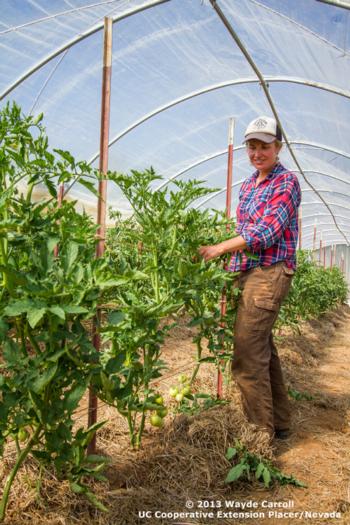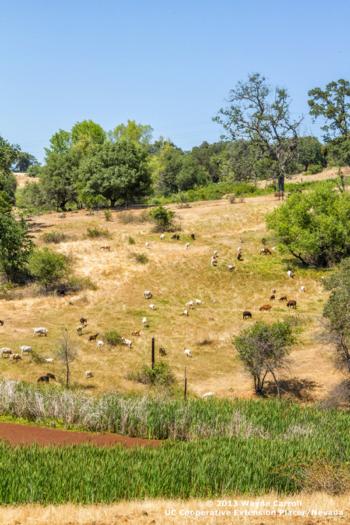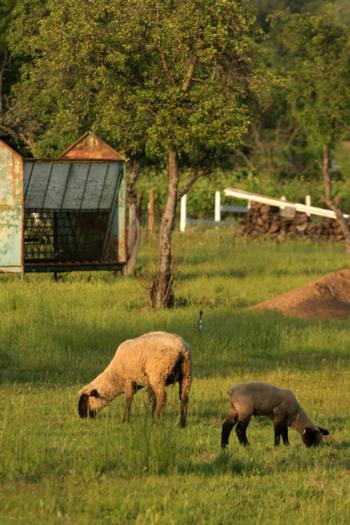Financial Resources
How to Finance a Small Farm
This publication, by Karen Klonsky at the UC Small Farm Program, walks you through the documents you might need to obtain a farm loan, suggests questions to ask the lender and questions a lender may ask, and provides definitions of terms you will need to know to analyze your financial situation.
Local Resources
USDA Farm Services Agency
Insurance Programs
Disaster Assistance Programs can help with natural disaster losses, resulting from drought, flood, fire, freeze, tornadoes, pest infestation, and other calamities. This insurance is available for grapes in Nevada County and for rice, wheat, walnuts, and plums in Placer County.
The Noninsured Crop Disaster Assistance program (NAP) provides financial assistance to producers of noninsurable crops when low yields, loss of inventory or prevented planting occurs due to natural disasters. This program may or may not be useful in Placer and Nevada counties. Call for more information.
 Loan Programs
Loan Programs

Direct and guaranteed farm ownership and operating loans made to family-sized farmers and ranchers, especially beginning farmers, who cannot obtain commercial credit from a bank, Farm Credit System institution, or other lender. Loans can be used to buy land, supplies, livestock, and equipment, as well as to build or make farm-related improvements. Among the specific loans offered include, but are not limited to: Beginning Farmers and Ranchers Loans, FSA Microloans, Rural Youth Loans, the Socially Disadvantaged Farmer or Rancher Loans, EZ Guarantee Loans, and Emergency Loans. Also available: a Plain Language Guide for Applying (published by Tufts New Entry Program).
Contacts:
Jesse Simoes (Placer County): jesse.simoes@ca.usda.gov
D. Lance Carter (Nevada County): 530.671.0850 x2
Belle Davis, loan officer: Belle.Davis@ca.usda.gov
Disaster Assistance programs:
Livestock Forage Program: provides compensation to eligible livestock producers who have suffered grazing losses for covered livestock on land that is native or improved pastureland with permanent vegetative cover or is planted specifically for grazing.
Non-Insured Crops (NAP): provides financial assistance to producers of noninsurable crops to protect against natural disasters that result in lower yields or crop losses, or prevents crop planting.
Tree Assistance Program (TAP): provides financial assistance to eligible orchardists and nursery tree growers to replant or rehabilitate eligible trees, bushes, and vines lost by natural disasters.
Western SARE
Western SARE is a program of the U.S. Department of Agriculture that delivers grant funding with the aim of supporting education and research within sustainable agriculture. One to three year grants are available to farmers and ranchers who wish to work in collaboration with a research or extension professional.
Contact the SARE office if you want to discuss a research project as a grant proposal.
(435) 797-2257
USDA Risk Management Agency, Davis Office
Offers Livestock Risk Protection for swine, feeder cattle, and fed cattle; Livestock Gross Margin Insurance for dairy cattle; Commodity Insurance for nurseries, walnuts, rice, forage seeding, forage production; a pilot insurance program for pasture, rangeland, and forage. Insurance program availability differs by county.
Contact: Catharine Anderson, 530.792.5870, rsoca@rma.usda.gov
Natural Resources Conservation Service Programs

Contact: Nevada County 530.272.3417; Placer County 530.823.6830
Other Information

US Department of Agriculture - New Farmers
Links to USDA Farm Services Agency (FSA) programs, including Beginning Farmer and Rancher loans, Direct Farm Ownership loans, the Emergency Farm Loan program, the Rural Youth Loan program, and the Farm Storage Facility Loan program.
ATTRA
The National Sustainable Agriculture Information Service offers an up-to-date listing of international, national, regional, state, local, private, and non-profit funding sources for farmers and ranchers, as well as for a variety of projects that support agricultural practices and projects.

